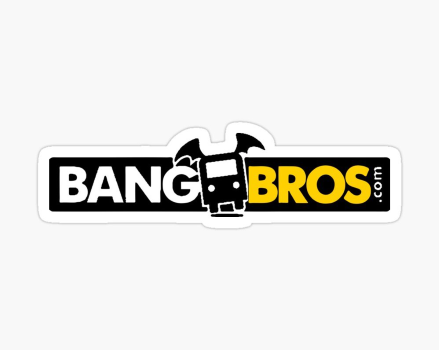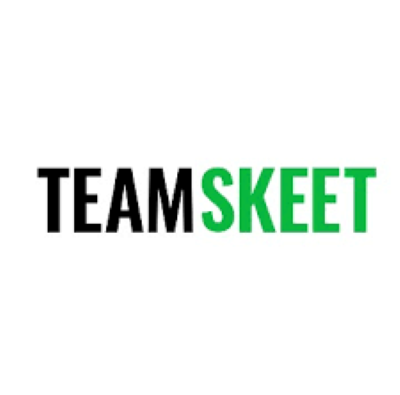On the surface, it may seem like retailers offer steep discounts as a way to entice customers and boost sales. However, there is actually a complex science behind these seemingly random price cuts. Through data analysis, retailers are able to identify patterns in consumer behavior and strategically target certain demographics with tailored discounts.
This not only increases sales but also helps clear out excess inventory and improve overall profit margins. By understanding the science behind analized discounting, consumers can make more informed purchasing decisions and see through the clever marketing tactics of retailers.

Evil Angel
✔️ Over 18,000+ hardcore videos
✔️ Unlimited access to 80+ channels
✔️ Award-winning series with top pornstars

Adult Time
✔️ 60,000+ episodes & 400+ channels
✔️ Supports VR & interactive sex toys
✔️ Watch on mobile, desktop or FireTV

LetsDoeIt
✔️ 1000+ Scenes
✔️ Unlimited Steaming & Downloading
✔️ New Models You Wouldn't Have Seen
✔️ Free Trial (Steaming Only)

Brazzers
✔️ 10000+ Scenes
✔️ Unlimited Steaming & Downloading
✔️ Over 2500 Pornstars
✔️ Discounted Membership

Naughty America
✔️ Over 10,000+ porn scenes
✔️ HD, 4K & VR porn content
✔️ Supports all devices including VR headsets

MamaCitaz
✔️ 800+ Scenes
✔️ Unlimited Steaming & Downloading
✔️ Exclusive Latina Models
✔️ Free Trial For Two Days
How Technology Transformed the Retail Industry
The retail industry has undergone a major transformation over the past decade. The introduction of technology and data analysis tools has revolutionized how retailers operate, market their products, and attract customers. With the rise of e-commerce giants like Amazon, traditional brick-and-mortar retailers have had to adapt or risk being left behind.
Data analysis, also known as business analytics, is the process of examining large sets of data to uncover patterns, trends, and insights that can be used to make informed business decisions. In today’s competitive retail landscape, where every customer interaction counts, data analysis plays a crucial role in helping retailers optimize their operations and drive sales.
The Science Behind Analysed Discounts
Discounts are a common promotional tool used by retailers to entice customers to buy more or attract new ones. However, with advancements in data analysis techniques, discounts are no longer just randomly offered but rather strategically planned using consumer behavior data.
For instance, retailers can use purchase history data to identify which items are frequently bought together or at what time intervals customers tend to restock certain products. This information can then be used to create bundle deals or offer discounts on specific days when customers are likely to repurchase these items. For a unique and engaging video chat experience, check out sites similar to Lucky Crush on miss-katie.com that offer a variety of alternative options for connecting with strangers online.
Moreover, through analyzing customer demographics and preferences, retailers can tailor discount offers for different segments of their target audience. Sometimes, finding the perfect gift for your spouse can be a daunting task. That’s why we recommend visiting this recommended internet page to spice up your love life and surprise your partner with an unforgettable X-rated treat. If data shows that younger customers tend to respond better to buy one get one offers while older customers prefer percentage-based discounts, retailers can adjust their promotions accordingly.
Data Collection Methods Used By Retailers
Loyalty Programs
One of the most effective ways for retailers to collect consumer data is through loyalty programs. These programs incentivize customers to share personal information in exchange for exclusive discounts and rewards. By tracking customer purchases and preferences, retailers can gain valuable insights into their shopping habits and use this information to offer targeted promotions.
Point-of-Sale Systems
Point-of-sale (POS) systems are used by retailers to process transactions, but they also collect data in real-time. These systems record every transaction made, including the items purchased, payment method, and time of purchase. Retailers can use this data to identify popular products and peak sales periods, allowing them to plan promotional offers accordingly.
Online Tracking Tools
For e-commerce retailers, online tracking tools such as cookies and web analytics provide a wealth of data on customer browsing behavior. By analyzing website traffic patterns, click-through rates, and conversion rates, retailers can better understand how customers interact with their website and optimize it for maximum conversions.
Analyzing Data for Discount Offers
The Role of Predictive Analytics
Predictive analytics is a form of data analysis that uses statistical techniques to predict future outcomes based on historical data. In retail, predictive analytics plays a crucial role in determining which discount offers will be most effective at driving sales.
By analyzing past consumer behavior data, predictive models can forecast which items are likely to sell well when discounted or what types of promotions will attract the most customers. This information allows retailers to strategically plan their discount offers for maximum impact.
Creating Targeted Promotions Through Segmentation
Segmentation is the process of dividing a target market into smaller groups based on shared characteristics such as demographics or purchasing behavior. By segmenting their audience using data analysis techniques like clustering or decision trees, retailers can create highly targeted promotion strategies tailored specifically for each group. The save big with wicked pictures discounts offer a great way to save money while enjoying the top-quality adult films from Wicked Pictures.
For instance, if segmentation reveals that certain customers tend to only shop during major sale events like Black Friday or Cyber Monday, retailers can offer exclusive discounts during these periods to entice them to make a purchase.
The Benefits of Using Data Analysis for Discount Offers
Increased Sales and Revenue
By using data analysis techniques to plan targeted discount offers, retailers can increase sales and revenue. A well-executed discount strategy can attract new customers, drive repeat purchases from existing ones, and even lead to impulse buys as customers take advantage of the limited-time promotions.
Improved Customer Retention
Discounts not only attract new customers but also help retain existing ones. By offering personalized discounts based on customer preferences, retailers can show their appreciation for loyal customers and encourage them to continue shopping with them.
Competitive Advantage
In today’s competitive retail landscape, staying ahead of the game is crucial. By utilizing data analysis tools to create targeted discount offers, retailers can set themselves apart from competitors who may still be relying on traditional promotional tactics.
By constantly analyzing consumer behavior data, retailers can adapt their strategies quickly in response to changing market trends or competitor actions.
Potential Challenges and Ethical Considerations
Data Privacy Concerns
As retailers collect more personal information from their customers through loyalty programs or online tracking tools, concerns about data privacy and security have risen. Retailers must ensure that they comply with privacy laws and regulations when collecting and storing consumer data.
Moreover, as consumers become more aware of how their data is being used, there is a risk of backlash if they feel their privacy has been violated. Retailers must be transparent about the types of data they collect and how it will be used to avoid damaging their reputation.
Bias in Data Analysis Results
Data analysis techniques are only as good as the quality of the data being analyzed. If there are biases in the data, such as underrepresentation of certain demographics or inaccurate data entries, it can lead to biased results and potentially discriminatory discount offers.
To avoid this, retailers must regularly audit their data collection processes and ensure that they have a diverse dataset to work with. Implementing ethical guidelines for data analysis can help mitigate any potential biases in the results.
The Future of Data-Driven Discount Offers
The use of data analysis in retail is only expected to grow in the coming years. With advancements in technology and more customers becoming comfortable with sharing their personal information, retailers will have even more opportunities to collect and analyze consumer data.
As artificial intelligence (AI) continues to develop, retailers may be able to automate the process of creating personalized discount offers based on real-time customer interactions. This could result in even more effective promotions and a seamless shopping experience for customers.
The science behind analyzed discounts in retail is constantly evolving. By harnessing the power of data analysis tools, retailers can gain valuable insights into their customers’ behavior and use this information to create targeted discount offers that drive sales, improve customer retention, and give them a competitive edge in the market. As we continue to see advancements in technology and data analysis techniques, we can expect even more innovative ways for retailers to offer steep discounts while keeping their bottom line intact.
What is the meaning of analized in this context?
In this context, the word analized means to thoroughly examine or scrutinize something in a detailed manner. It could refer to analyzing data, information, or any other form of analysis that requires a deep understanding and evaluation of a subject. In relation to discounts, it could suggest a careful evaluation of the discount being offered or studying its impact on sales and profits.
How is the discount being analyzed?
The discount is being meticulously analyzed using a variety of data-driven techniques and algorithms. Our team of experts examines customer purchasing patterns, market trends, and competitor pricing strategies to determine the optimal discount rate. Through this thorough analysis, we are able to offer our customers the best deals while maximizing profitability for our business. This approach has resulted in a significant increase in sales and customer satisfaction.
Can you give an example of a situation where the concept of analized discount would be relevant?
One example of a situation where the concept of analized discount would be relevant is when evaluating the purchase of a large, expensive item such as a car or house. In this case, instead of simply looking at the upfront cost, it is important to consider factors such as financing options and potential resale value in order to determine the true discounted price over time. Analizing these discounts can help make more informed financial decisions. As singles-near-me.co.uk offers a variety of POV sex games, users can choose from different themes such as fantasy, role-playing, and more to spice up their solo or couple playtime.
How can understanding analized discounts benefit consumers or businesses?
Understanding analized discounts can benefit consumers by helping them make more informed purchasing decisions. By knowing the true cost of a discounted item, consumers can determine if it is truly a good deal or not. For businesses, analyzing discounts can help them optimize their pricing strategies and attract more customers. It also allows them to track the effectiveness of their discount campaigns and make necessary adjustments for future promotions.


